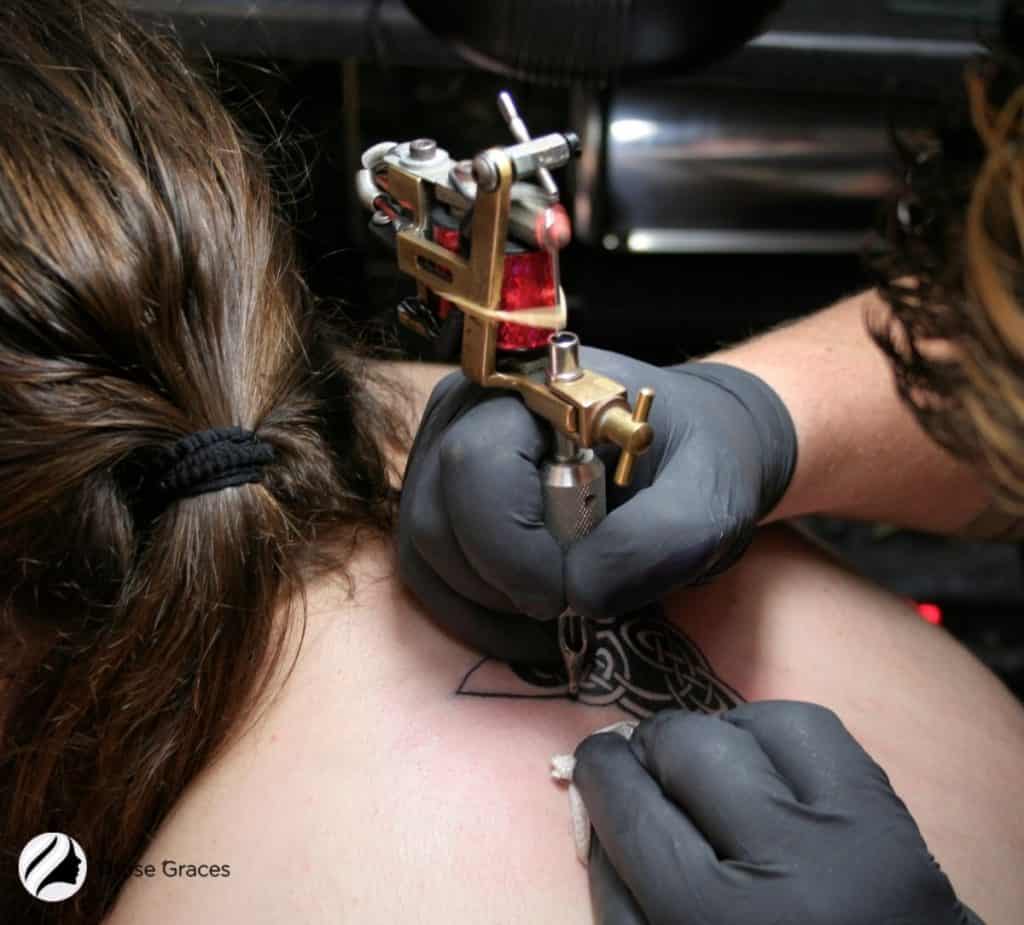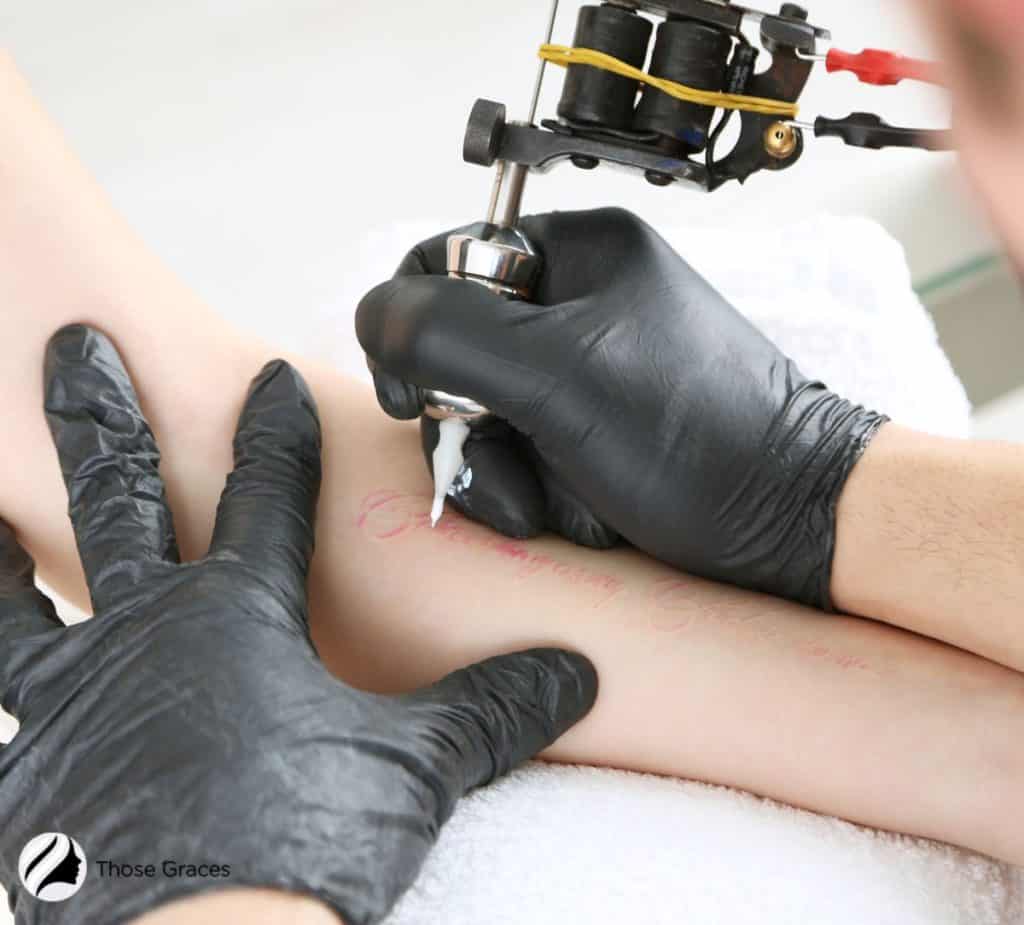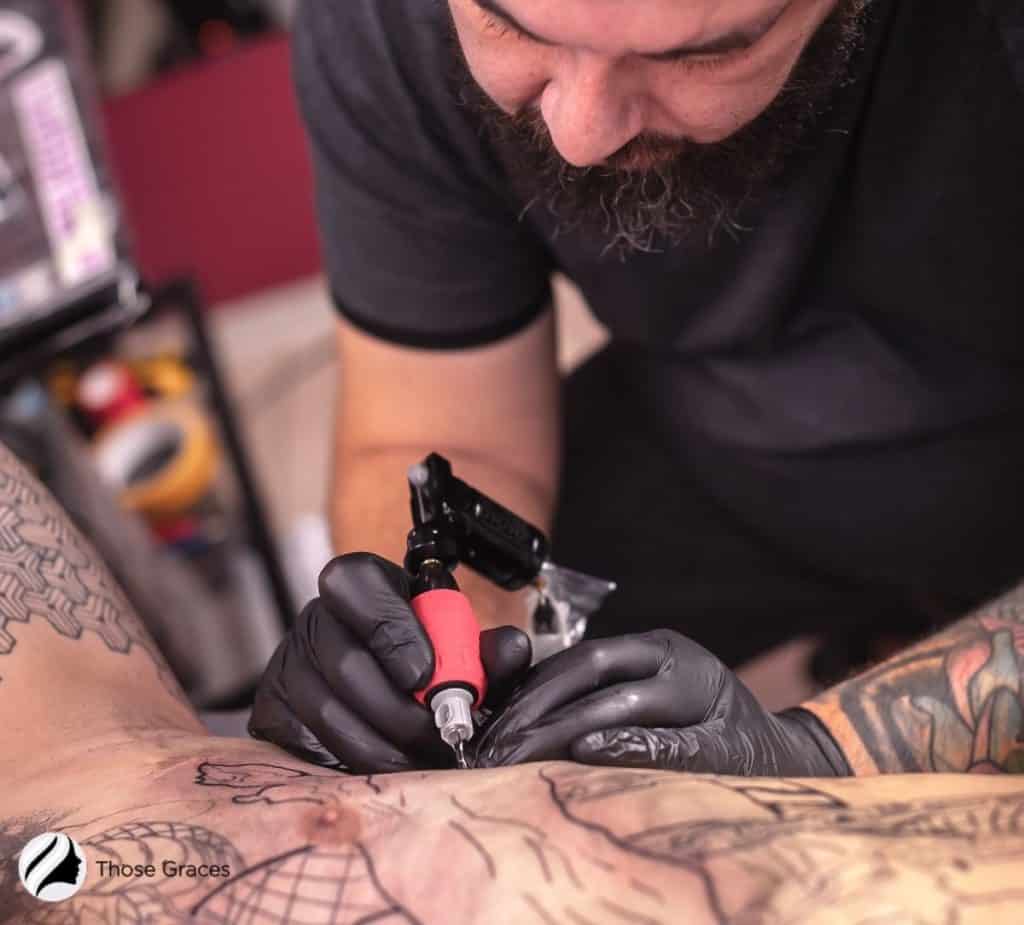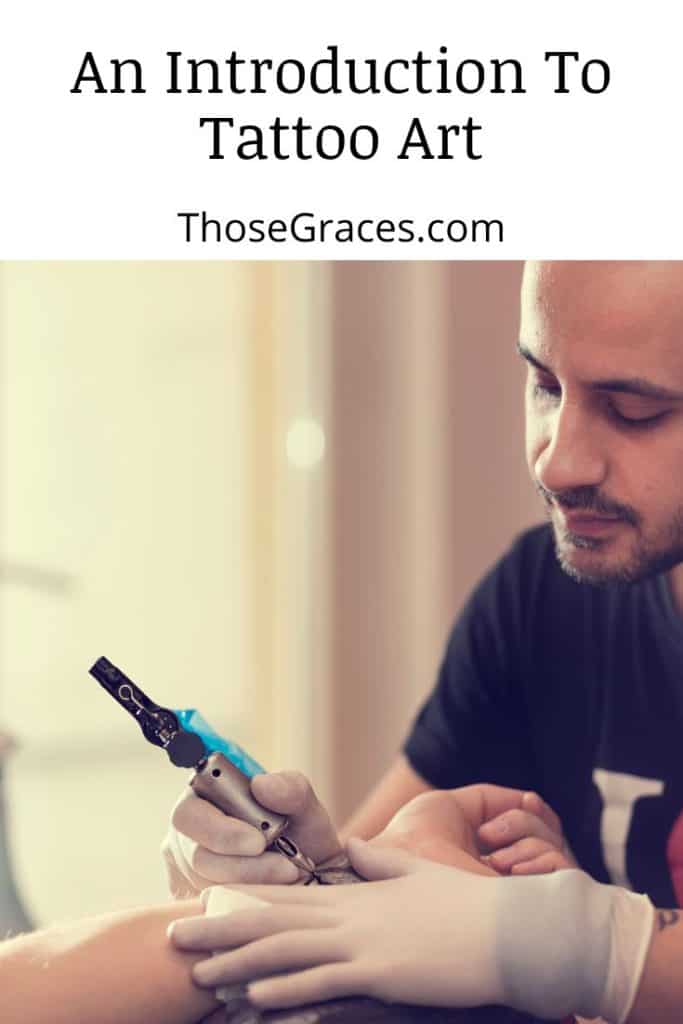If you want to know about tattooing for beginners, this is the destination you were looking for!
There are about 31,196 tattoo artist businesses in the United States at present. (1)
If you’re a beginner tattoo artist and want to learn about the tattoo industry, I have a guide set up, so you know your basics!
Table of Contents
Key Takeaways:
- Always make sure your workstation is clean, organized, and hygienic.
- Always sterilize your equipment.
- Practice drawing, outlining, shading, and coloring.
- Provide aftercare to your clients.
Make sure to check our list of good starter tattoo machines.
An Introduction To Tattoo Art
In this guide, I’m going to introduce you to the basic elements of the art of tattooing.
This beautiful art form goes from a drawing on a sheet of paper to a permanent design on actual human skin.

To become a professional tattoo artist, it’s best to curate discipline and good habits from the get-go.
Let’s delve into the learning process!
Taking Hygiene Seriously
One of the first things you must always be careful of when learning tattooing for beginners is hygiene.
You’ll be using tattoo needles to poke the skin, meaning body fluids will get on the tattoo chair and station. In addition to body fluids, think of the equipment itself.
You won’t always use disposable equipment, such as rotary machines or the standard tattoo machine.
You will need to sterilize and cleanse your equipment to prevent cross-contamination and leave your clients happy and healthy.
You don’t want to give your clients a bad tattoo.
Bad tattoos aren’t always defined by the client’s choice or your skillset. They can turn out horrible if they become infected.
You need to use either disposable equipment or sterilize your equipment using chemical disinfectants, alcoholic and antibacterial wipes, an autoclave, and cold sterilization.
It isn’t just about the equipment. You should never use your bare hands to touch a client’s skin or equipment. Always use surgical or medical gloves.
This is so you don’t come into contact with any transmittable diseases.
Preparing The Workstation
Your workstation is where you will bring your tattoo to life, where potential clients will judge your work, and where you can even become a famous tattoo artist.
Organize your workstation and keep it clean.
It’s where you keep your tattoo machine, distilled water, cleaning fluid, vaseline, power supply, paper towels, gloves, tattoo designs, stencils, tattoo needles, and inks.
Whew! It might sound like many things, but trust me when I say all of them are necessary for a proper setup.
Any respectable tattoo studio will have well-prepared workstations with sterile equipment.
Understanding Dimensions
Your tattoo design shouldn’t be too big or too small. Remember that human bodies are unique, and tattoos are bound to vary on different bodies.
You should always aim to fit the tattoo design onto whichever body part the client wants.
You’ll be working with real skin, which comes in all textures and shapes.
Make sure your tattoo is flattering on the body and becomes a part of the client’s skin instead of jutting out like an oddity.
One way to practice this is by asking your friends and family to volunteer their skin as a canvas for your drawings.
You can also try digital drawings as a means of practice.
Anatomical considerations from an early stage will get you into the habit and prevent problems at a later stage.
Making The Stencil
You’re getting close to using all that fancy – and scary – equipment!
A lot of artists prefer tracing out their own stencils. However, if you think this is too time-consuming, you can always use a machine.
Remember that complex designs can take a lot of time to trace, and any error would mean you have to start over. This could easily frustrate you and the client.
Once you’re done with the stencil, you’ll have to apply it to the skin. For this, the good old application cream will come in handy.
Make sure you don’t risk using materials that may lead to cross-contamination.
The Tattoo Outline
Here comes the fun part! You get to start outlining the tattoo design!

Most tattoo shops or tattoo apprenticeships will never let you practice directly on real skin. Instead, you’ll be using fake skin. (2)
Practice as much as possible on the fake skin before moving on to human skin. When you do progress, make sure to clean clients’ skin.
You’ll then decide between the types of needles and make the neatest and smoothest lines possible.
Learning to balance too much force and not enough force is one of the tattoo basics you will master with time.
CHECK: Best Fruits to Practice Tattooing
Elements of Design
Here’s a helpful video to guide you through shading, lining, and more:
With a large variety of inks, tattoo techniques, and designs, you have a lot of choices in how the tattoo will turn out.
Shading
Shading will make your tattoo look alive.
Try to use your pencil to shade when you’re using paper because you’ll be using different shades of black to create a gradient effect.
Using a pencil to practice your shading techniques will get you ahead if you’re consistent.
You can create this effect by diluting the black yourself or purchasing ready-made ink in shades of grey.
The goal is to make your shading look smooth.
Coloring
Like their personalities, potential clients may want something more vibrant than shading; they may ask for colored tattoos.

Tattoo colors can look different on different skin types; some might be harder to use than others, especially because of the blood.
Use the appropriate colors on light and dark skin in the tattooing process.
Curious why tattoo artists need more than one machine? Our comprehensive guide explores the advantages of utilizing multiple tattoo machines and how they can elevate the quality and flexibility of your tattoos.
Don’t Forget Aftercare
Make sure you clean the client’s tattoo and cover it with dressing film.
This will prevent it from becoming infected because many people tend to poke and prod their skin after getting it tattooed.
Debrief them on how to take care of their skin.
Don’t use saunas or go swimming or touch it with dirty hands!
ALSO CHECK: Henna Tattoo Price
Frequently Asked Questions
1. How to take care of a new tattoo
Moisturize the tattooed skin well so the skin doesn’t dry out.
2. What do tattoo artists use to disinfect?
Conclusion
I know everyone who wants to read about tattooing for beginners is now much more confident about venturing into the tattoo industry!

Let me know about your experience as a beginner in the comments below!
References
1. IBISWorld – Industry Market Research, Reports, and Statistics [Internet]. Ibis World. 2021. Available from: https://www.ibisworld.com/industry-statistics/number-of-businesses/tattoo-artists-united-states/#:~:text=Tattoo%20Artists%20Businesses%20in%20the%20US%20in%202022
2. Molenaar N. How to Tattoo for Beginners – Tattooing 101 [Internet]. Tattooing 101. [cited 2022 Nov 30]. Available from: https://tattooing101.com/learn/tips-advice/beginners-2/#t-1627550853393



